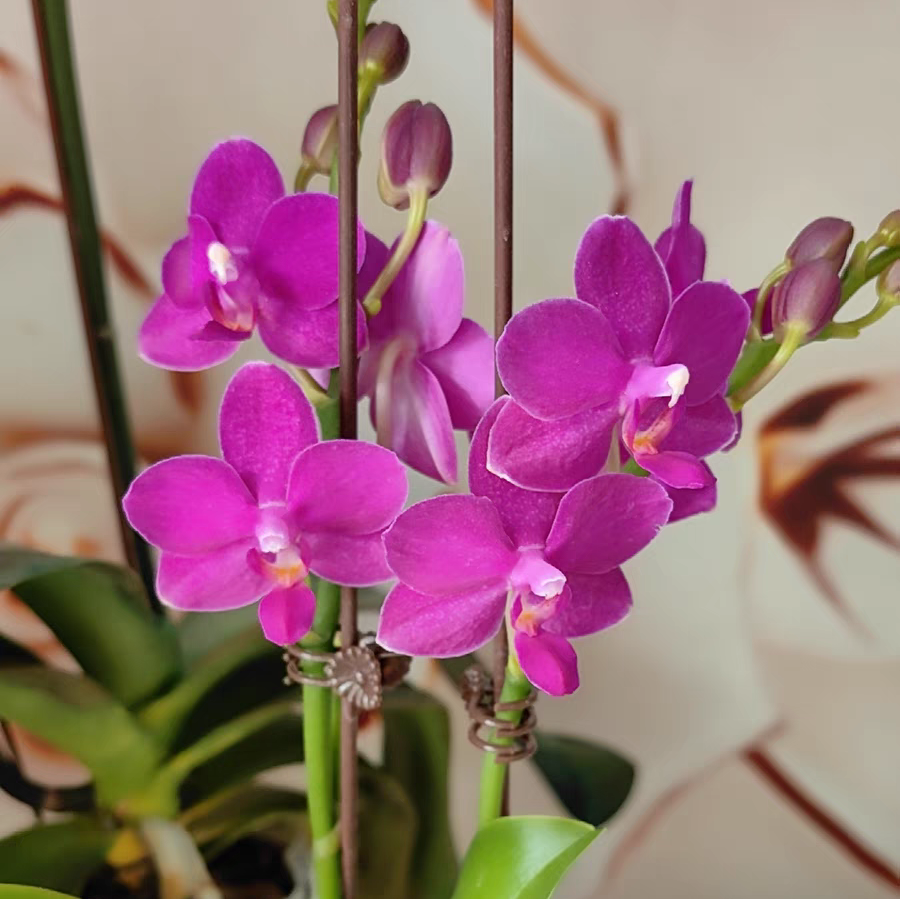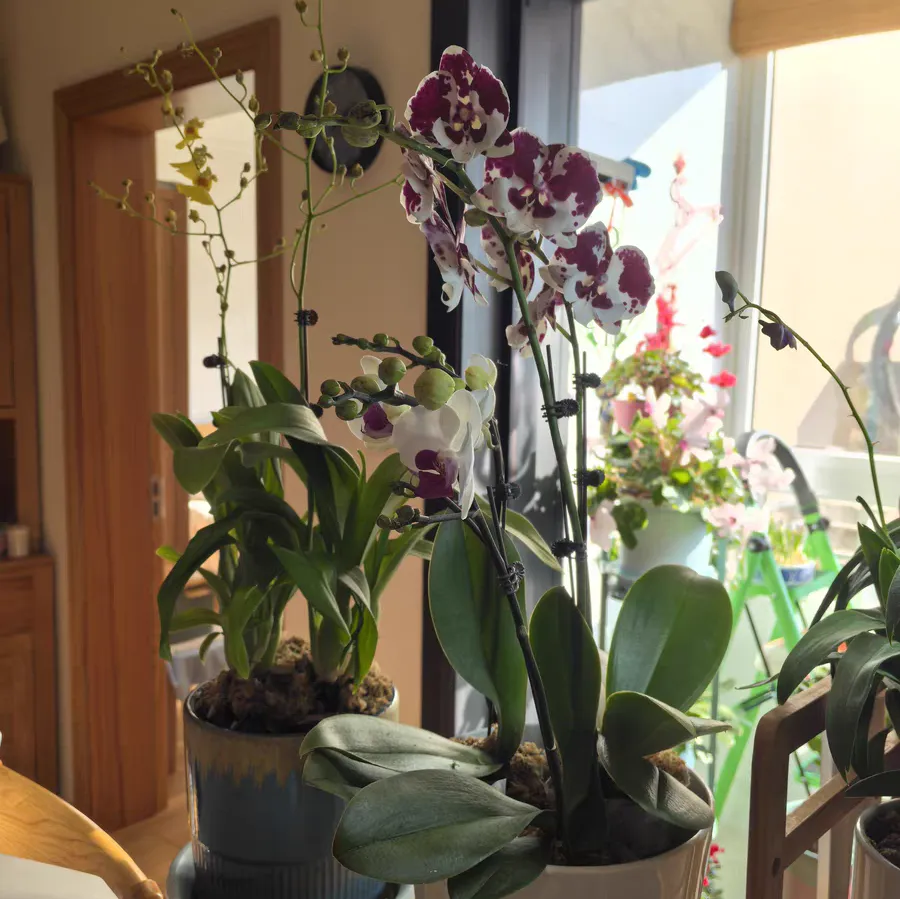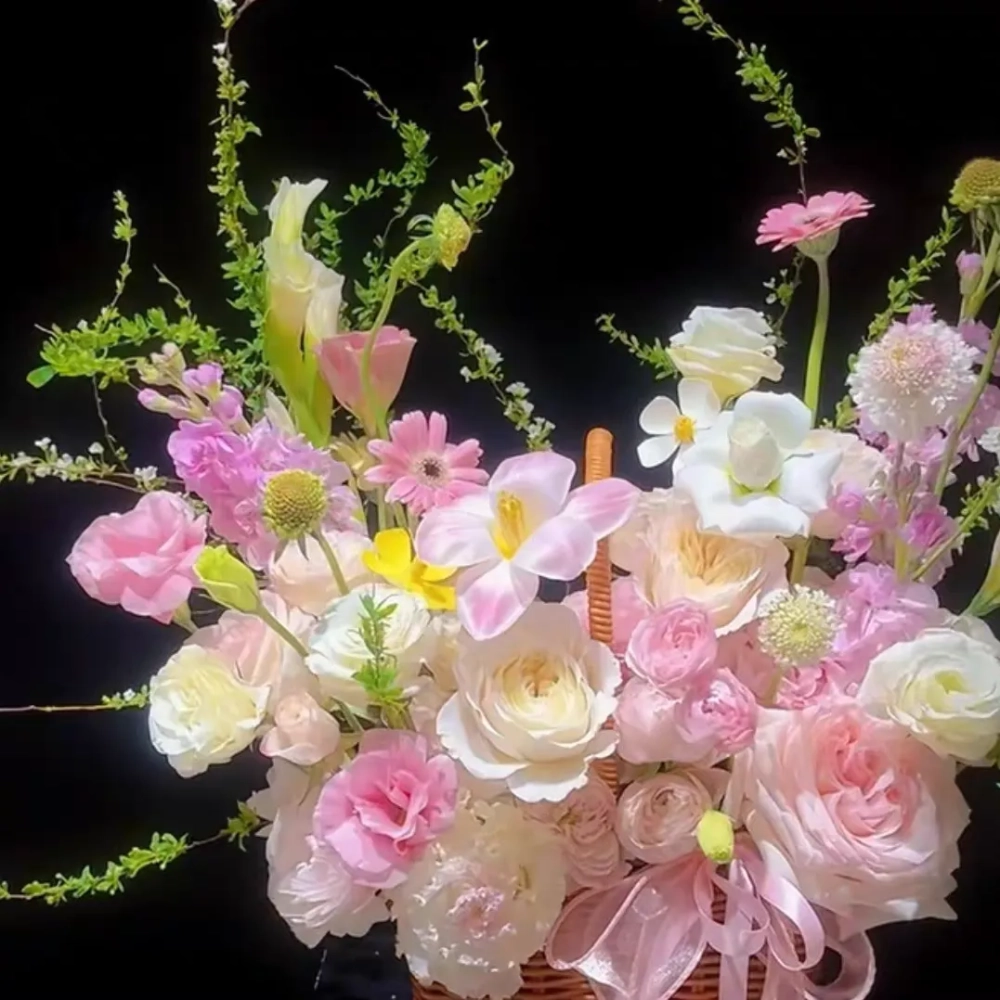Today, I will introduce a super beautiful Phalaenopsis - Purple Grape.
Phalaenopsis Purple Grape has extremely high appearance. The deep purple petals are as charming as purple grapes, elegant and noble. It has a relatively long flowering period. Generally speaking, if properly cared for, it can continuously bloom for two to three months or even longer. It is relatively easy to care for. It likes scattered light, and the suitable temperature is between 15℃ and 28℃. Watering should be moderate. Whether placed in the living room, bedroom or office, it can instantly enhance the style of the entire space.
Daily maintenance:
Light: It likes bright scattered light but cannot be directly exposed to the sun. It can be placed near a window but in a place without direct sunlight, such as the inside of a windowsill or in the light filtered by a sheer curtain.
Temperature: The suitable temperature for growth is between 15℃ and 28℃. In winter, pay attention to keeping warm to avoid frostbite due to too low temperature; in summer, pay attention to ventilation to prevent high temperature and sultriness.
Watering: Watering should be appropriate, not too much or too little. Generally, wait until the surface of the sphagnum moss dries before watering. When watering, water thoroughly but do not let water accumulate at the bottom of the pot. You can use the immersion method, place the pot in a container filled with water and let the water seep in slowly from the bottom.
Humidity: Phalaenopsis likes relatively high humidity. You can place some basins around or use a humidifier to increase the air humidity. But be careful to avoid keeping the leaves in a wet state for a long time to prevent diseases.
Precautions:
Avoid frequent movement: Once Phalaenopsis adapts to an environment, do not move it frequently, otherwise it may affect its growth and flowering.
Fertilization: Appropriate fertilization can be done during the growth period, but pay attention to not having too high a concentration. You can choose special Phalaenopsis nutrient solution and fertilize according to the instructions.
Pest control: Regularly check the leaves and flowers. If pests and diseases are found, deal with them in time. You can use some biological control methods or low-toxic pesticides for prevention and control.
Repotting: When the root system of Phalaenopsis grows too vigorously or the sphagnum moss ages, you can consider repotting. But be careful when repotting to avoid damaging the root system.
Is Phalaenopsis Purple Grape easy to grow? How should it be grown?

Share with
Tagged in :




Leave a Reply